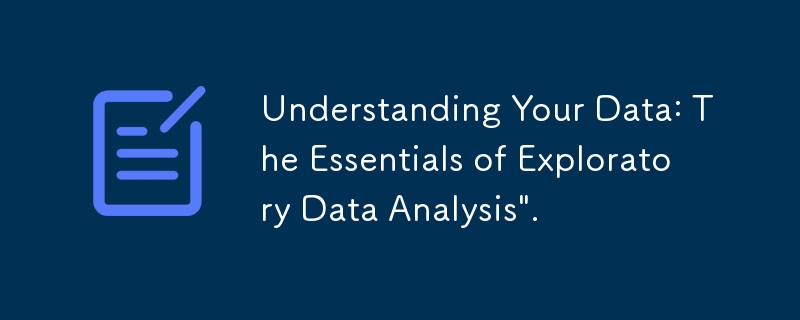

Exploratory data analysis (EDA) is analyzing data sets to summarize their main characteristics, identify patterns, spot anomalies, and test hypotheses often using statistical graphics and other data visualization methods. It helps summarize the data and uncover insights from the dataset.
Typical Steps involved in Exploratory Data Analysis (EDA).
Step 1: Collection of the required data from various sources such as databases, web scraping, or APIs. Then import data and the required libraries to integrated development environments(IDEs) such as jupyter notebook. Python libraries like pandas, NumPy, Matplotlib, and Seaborn are used to explore and visualize data.
Step 2: Observe your dataset and perform data cleaning such as missing values or errors.
Step 3: Identify patterns and locate any outliers in the dataset. Perform descriptive statistics to summarize the data to get a general idea of its contents, such as mean, min, and max values.
Step 4: Use what you learn to refine or generate new questions.
Step 5: Transform and model data to look for answers. e.g. aggregate or disaggregate data based on analysis needs.
Step 6: Perform data exploration using univariate, bivariate, and multivariate analysis.
Step 7: Apply data visualization of distributions and relationships by use of certain visual tools such as line charts, bar charts, box plots, scatter plots, and heat maps.
Step 8: Hypothesis Testing-Develop and evaluate hypotheses using statistical tests to verify assumptions or relationships within the data.
Step 9: Summarize the findings with key insights from the descriptive statistics, and data visualizations generated. Document the EDA process, and findings and create reports and presentations to convey results to all the relevant stakeholders.
Benefits of Exploratory Data Analysis
Helps to understand and interpret complex datasets. EDA assists data scientists in uncovering patterns, detecting anomalies, testing hypotheses, and validating assumptions using a range of statistical and graphical techniques. Furthermore, it enables the detection of data quality issues, such as duplicate records, which can be corrected before advancing to a more detailed analysis.
Conclusion
Exploratory Data Analysis (EDA) enables the transformation of data into actionable insights. It can be applied to any type of data—structured, unstructured, or semi-structured—though the tools and techniques may differ. This process allows data scientists and analysts to examine the dataset from multiple perspectives, without any preconceived assumptions about its content.
The above is the detailed content of Understanding Your Data: The Essentials of Exploratory Data Analysis\'.. For more information, please follow other related articles on the PHP Chinese website!




